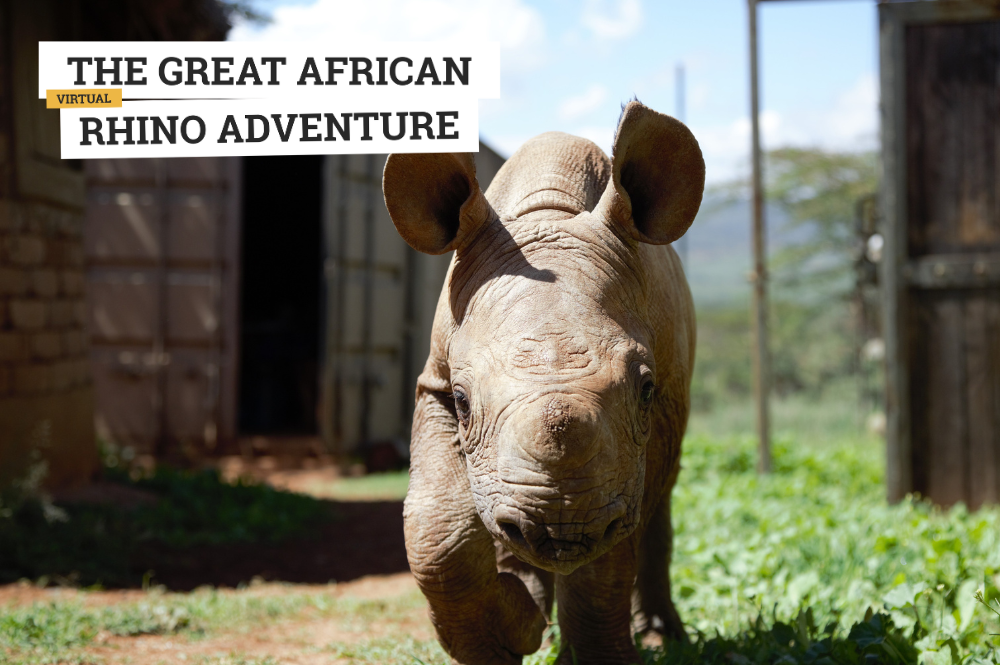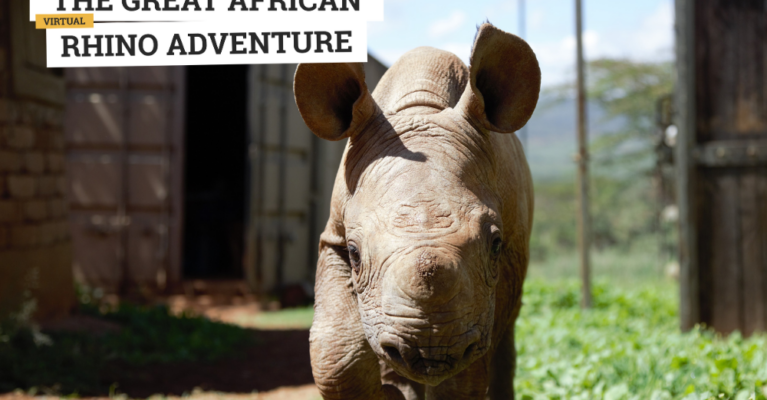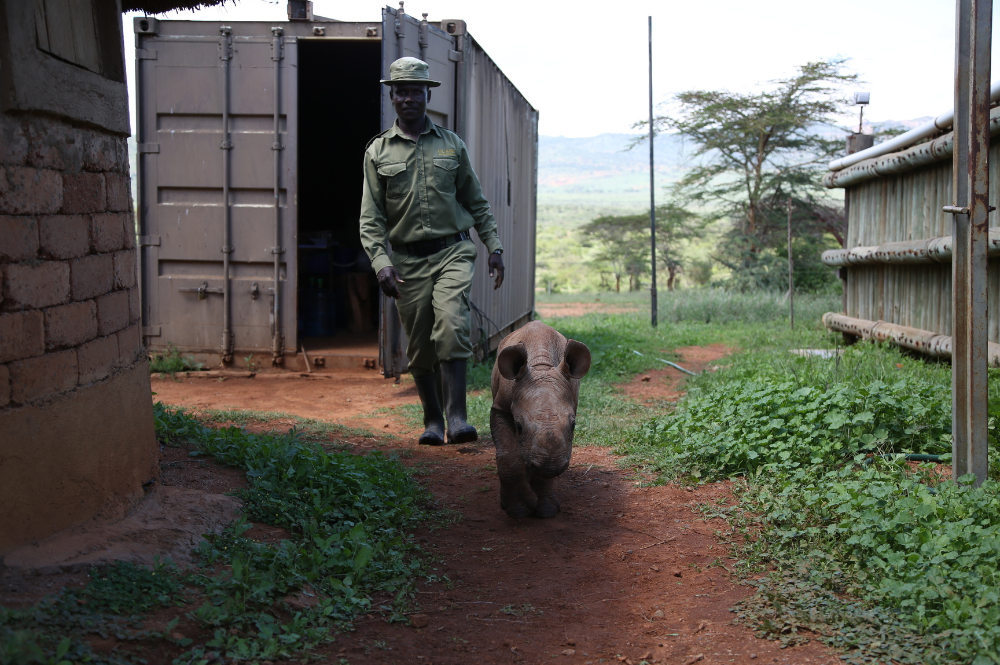

Credit: Save the Rhino International
Bella the black rhino
We often focus on supporting the recovery of rhino populations, whether that be locally, nationally or species-wide. But, each of these populations is made up of individual animals, individuals with their own stories. One that springs to mind is Siabuwa, a South-central black rhino in Zimbabwe. Siabuwa was evacuated in 1992 from a landscape plagued by poaching and went on to have 10 female calves, which, in turn, had many calves of their own.
The same principle of individual rhino stories holds true for Kenya’s rhinos. When necessary and possible, orphaned or abandoned calves are hand-reared with the aim to return them to the wild once they are grown. Back in their wild landscape, just like Siabuwa, they can go on to live with and contribute towards the larger population.
Bella is a young female Eastern black rhino currently being hand-reared on Ol Jogi Conservancy. Her story begins before her time in 2013 when, after more than two decades of zero poaching, Ol Jogi lost several of its black rhinos, including a cow, Winnie. Winnie’s calf, Namunyak, had been injured during this ordeal, but thankfully was able to receive treatment and made a full physical recovery.
Unfortunately, Namunyak’s mental scars took longer to heal. Whilst black rhino females normally have their first calves before seven years of age, Namunyak only had her first calf, Bella, at 11 years old, something Ol Jogi’s team suspects is a consequence of the traumatic incident she experienced as a calf.
Unfortunately, following the initial excitement of Bella’s birth, she was soon abandoned. When Ol Jogi’s rangers found her, she was weak and dehydrated. Wounds over her body, most likely from a predator, were infected. Bella needed urgent care.
It was touch and go for months but eventually, Bella began to make real progress. Now, more than a year old, she is flourishing in her boma and has grown to a healthy rhino weight of 226kg! When she reaches three and a half years old, the team will start to integrate her into the wild again, where she can hopefully meet a potential suitor.
If Bella turns out anything like Siabuwa, who left more than 50 descendants before succumbing to old age at 39 years, she’ll make an extraordinary contribution to the survival of her species. So far, thanks to the hard work of Ol Jogi’s team, we have every faith that Bella will have a lasting legacy.



